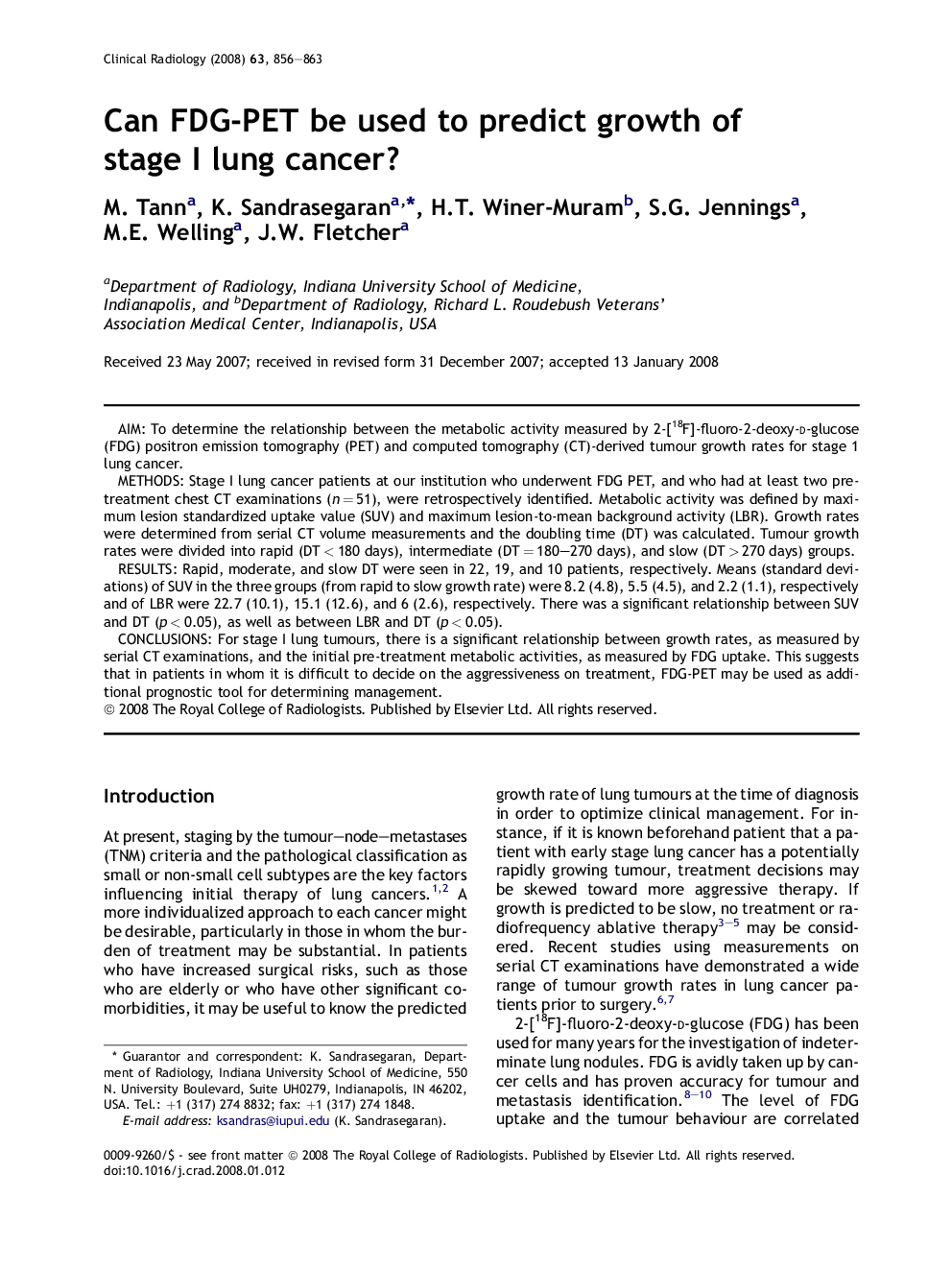| Article ID | Journal | Published Year | Pages | File Type |
|---|---|---|---|---|
| 3984066 | Clinical Radiology | 2008 | 8 Pages |
AimTo determine the relationship between the metabolic activity measured by 2-[18F]-fluoro-2-deoxy-d-glucose (FDG) positron emission tomography (PET) and computed tomography (CT)-derived tumour growth rates for stage 1 lung cancer.MethodsStage I lung cancer patients at our institution who underwent FDG PET, and who had at least two pre-treatment chest CT examinations (n = 51), were retrospectively identified. Metabolic activity was defined by maximum lesion standardized uptake value (SUV) and maximum lesion-to-mean background activity (LBR). Growth rates were determined from serial CT volume measurements and the doubling time (DT) was calculated. Tumour growth rates were divided into rapid (DT < 180 days), intermediate (DT = 180–270 days), and slow (DT > 270 days) groups.ResultsRapid, moderate, and slow DT were seen in 22, 19, and 10 patients, respectively. Means (standard deviations) of SUV in the three groups (from rapid to slow growth rate) were 8.2 (4.8), 5.5 (4.5), and 2.2 (1.1), respectively and of LBR were 22.7 (10.1), 15.1 (12.6), and 6 (2.6), respectively. There was a significant relationship between SUV and DT (p < 0.05), as well as between LBR and DT (p < 0.05).ConclusionsFor stage I lung tumours, there is a significant relationship between growth rates, as measured by serial CT examinations, and the initial pre-treatment metabolic activities, as measured by FDG uptake. This suggests that in patients in whom it is difficult to decide on the aggressiveness on treatment, FDG-PET may be used as additional prognostic tool for determining management.
